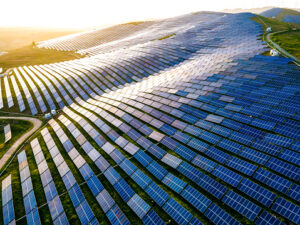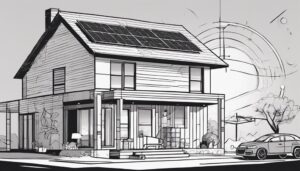You use several solar power products in https://accessology.com/where-to-buy-phentermine-adipex/ your daily life. They generate cheap electric power for you but how much electric power can a solar panel produce?
What does it mean when someone says it is a 245W, 255W,300W, or 400W panel? These all depend on weather conditions, wattage, capacity, or power output.
Which is an important factor to consider when you think about buying a solar device. It determines how much power a solar panel will
produce.
The actual output capacity of a solar panel depends upon sun hours, shading, and many other factors. Here we’ll tell you how much power solar panels produce.

Solar Panel Output
The standard unit to measure output for a solar panel is kilowatt-hours (kWh). You can use the following formula to calculate the electric power that most residential solar panels generate daily.
- Measure the size of your solar panel in square meters.
- Multiply it to 1000
- Multiply the answer to the efficiency of solar panel
- Then multiply this figure by the number of hours for which the sun appeared in your area
- Then divide the final answer by 1000
Your panel supplier provides you with efficiency. Whereas attention towards the sun hour is necessary to calculate the power correctly because it depends on different weather conditions.
Several Solar Panels Are Required For Your House
You will have to think about many factors if you are going to install a solar system in your house. One question is how many solar panels will your home need?
The average house needs almost 25 panels for a solar system. But the question is not as simple as it sounds.
The exact quantity that you require depends upon many factors. Like your locality, sun timings, how much energy you use daily, your area, home size, weather conditions, and many others.
Use Monocrystalline Cells To Produce More Energy
The most important factor to consider is the power rating or wattage of a solar panel. Wattage is the amount of power that a panel can generate under STC (Standard Test Conditions).
- The majority of residential solar panels have an average rating of 300 to 370 watts. The more wattage, the more power a panel can generate.
- The most prominent way to increase wattage is the use of monocrystalline cells.
- They are prepared from cylindrical silicon ingots which are made from a single silicon crystal same as a semiconductor.
They absorb sunlight and create an electric field. Then they produce power according to the following equation:
P(power)= V(Voltage)×I(current)
Factors Affecting Energy Produced By Solar Panels

Energy production by solar panels (PV) is dependent upon many factors. The angle of the sun, the amount of direct sunlight received, and geographical location affect how much energy you can expect your system to produce. Solar PV manufacturers typically rate their products at an idealized performance level under perfect conditions and in a specific geographic location.
Systems installed in different locations will provide different performance levels. Below we’ll discuss some specifics about local conditions that impact how much energy your solar energy system will produce:
1) Orientation And Tilt Of Your Solar Panels
One of the most important factors for determining how much energy solar panels produce is their orientation relative to the true south. Systems are usually oriented within plus or minus 10 degrees of true south, which is the direction of the equator. The further away from true south, your panels are mounted, the less energy they will produce.
Different models of solar panels can compensate for differences in orientation by rotating themselves to face due south (and optimal tilt angle). However, only one panel may be rotated at a time (per manufacturer recommendations), and until all panels can rotate this way, it’s impossible to achieve optimum performance.
2) Shadows Over Panels
Shadows cast over solar panels reduce their ability to absorb light so they cannot convert as much sunlight into electricity. This is because shadows decrease incident light by blocking some of it out directly under the shadow.
Additionally, shadows create diffuse light which scatters across surfaces causing the light to spread out and get weaker. This decreases the overall energy delivered by the Solar PV system.

3) Number Of Daylight Hours
As solar panels produce more power in daylight hours, shorter days will reduce how much electricity is generated by your system. If you live in a location with long winter days, this will mean reduced solar output over a year and reduced returns on investment for your solar panel installation.
The same can be said for locations with high night-time usage demands during the summer months.
If there are few hours between sunset and sunrise (like in higher latitudes), total annual energy production from your system may decrease substantially even though sunlight levels might be strong all year long. Some geographical areas also experience seasonal changes in sunlight levels.
4) Sunlight Intensity
Solar panels need at least 5 hours of direct unobstructed sunlight per day to operate continuously. As your altitude increases, the length of time between sunrise and sunset also increases, leading to a longer period of darkness each day during the winter months.
In these regions, more energy is required from an external power source for lighting and other needs in the evening when solar production has ceased for the day.
However, in summer months when days are longer and there is more daylight, there may be sufficient stored energy stored in batteries or excess power produced (depending on available electricity usage). This stored energy can then be used in the evening when demand is high with little effect on system performance.

5) Roof Tilt
The angle of your roof is also important in determining how much energy you can expect to produce from a solar panel installation. All things being equal, the more horizontal (flat) and the closer to facing due south your panels are mounted, the better performance you can expect when compared with optimal orientation.
The easiest way to determine changes in your expected energy production is by using tools that provide such an estimate based on geographic location and roof measurements. Keep in mind that geographical location has a greater effect on overall system performance than does roof tilt alone.
With no geographical adjustment, a northerly tilted flat roof will still produce a net positive annual energy production versus a southern, equally flat roof that is not tilted. The difference between the two will be due to prevailing sunlight patterns and latitude.
Conclusion
That was all about solar panel efficiency and what energy a solar panel can produce. The amount of power that solar panels produce depends on the size and type of panel. There are many factors that determine how much energy a given panel will generate, including the weather conditions it is exposed to, where you live in relation to the equator (southern hemisphere panels typically produce more electricity), and what kind of inverter you use.
If you want your investment in solar power to be worthwhile, make sure you do your research before buying any equipment or signing any contracts with installers. We hope that this guide was helpful. Share your thoughts about solar panel system power in the comments below.



